At 13:40 UTC March 15th a geomagnetic sudden impulse was detected indicating that the CME we were expecting today has arrived. This CME was produced in association with a M7.9 solar flare from Sunspot Region 1429 on March 13, 2012. Solar winds reaching as high as 770.5 km/s and a proton density as high as 4.7 p/cc have been picked up at the ACE satellite. With the high wind speed and the Bz tilted south (-) this CME impact is stiring up a G1-Kp5 geomagnetic storm at this time.
View original report here:
Check back often for further updates and alerts on this event.
All updates will be added to the bottom of this report.
ACE Readings @ 14:49 UTC.
Thursday March 15, 2012:
Solar Wind: 697.7 km/sec
Density: 3.5 protons/cc
Bz: -7.2
By: -3.6
ACE Readings @ 14:49 UTC.
Thursday March 15, 2012:
Solar Wind: 697.7 km/sec
Density: 3.5 protons/cc
Bz: -7.2
By: -3.6
Space Weather Message Code: SUMSUD
Serial Number: 149
Issue Time: 2012 Mar 15 1314 UTC
SUMMARY: Geomagnetic Sudden Impulse
Observed: 2012 Mar 15 1309 UTC
Deviation: 27 nT
Station: Boulder
Observed: 2012 Mar 15 1309 UTC
Deviation: 27 nT
Station: Boulder
Geomagnetic Storm Levels and Effects - List
Also today there was a M1.2 solar flare peaking at 07:52 from sunspot region 1432. There was a gap of missing data after this flare event. When the data came back online, it was showing a drop in the Xray flux. It is hard to tell at this time if there was another large flare during this time or not. We will look for more data on this and update if we find anything.
Update 15:06 UTC March 15, 2012:
Issue Time: 2012 Mar 15 1505 UTC
ALERT: Geomagnetic K-index of 5Threshold Reached: 2012 Mar 15 1500 UTC
Synoptic Period: 1500-1800 UTC
Active Warning: Yes
NOAA Scale: G1 - Minor
Potential Impacts: Area of impact primarily poleward of 60 degrees Geomagnetic Latitude.
Induced Currents - Weak power grid fluctuations can occur.
Spacecraft - Minor impact on satellite operations possible.
Aurora - Aurora may be visible at high latitudes, i.e., northern tier of the U.S. such as northern Michigan and Maine.
Update 18:25 UTC March 15, 2012
Space Weather Message Code: ALTK06
Serial Number: 283
Issue Time: 2012 Mar 15 1724 UTC
ALERT: Geomagnetic K-index of 6
Threshold Reached: 2012 Mar 15 1724 UTC
Synoptic Period: 1500-1800 UTC
Active Warning: Yes
NOAA Scale: G2 - Moderate
Potential Impacts: Area of impact primarily poleward of 55 degrees Geomagnetic Latitude.
Induced Currents - Power grid fluctuations can occur. High-latitude power systems may experience voltage alarms.
Spacecraft - Satellite orientation irregularities may occur; increased drag on low Earth-orbit satellites is possible.
Radio - HF (high frequency) radio propagation can fade at higher latitudes.
Aurora - Aurora may be seen as low as New York to Wisconsin to Washinton state.
ALERT: Geomagnetic K-index of 5Threshold Reached: 2012 Mar 15 1500 UTC
Synoptic Period: 1500-1800 UTC
Active Warning: Yes
NOAA Scale: G1 - Minor
Potential Impacts: Area of impact primarily poleward of 60 degrees Geomagnetic Latitude.
Induced Currents - Weak power grid fluctuations can occur.
Spacecraft - Minor impact on satellite operations possible.
Aurora - Aurora may be visible at high latitudes, i.e., northern tier of the U.S. such as northern Michigan and Maine.
Update 18:25 UTC March 15, 2012
Space Weather Message Code: ALTK06
Serial Number: 283
Issue Time: 2012 Mar 15 1724 UTC
ALERT: Geomagnetic K-index of 6
Threshold Reached: 2012 Mar 15 1724 UTC
Synoptic Period: 1500-1800 UTC
Active Warning: Yes
NOAA Scale: G2 - Moderate
Potential Impacts: Area of impact primarily poleward of 55 degrees Geomagnetic Latitude.
Induced Currents - Power grid fluctuations can occur. High-latitude power systems may experience voltage alarms.
Spacecraft - Satellite orientation irregularities may occur; increased drag on low Earth-orbit satellites is possible.
Radio - HF (high frequency) radio propagation can fade at higher latitudes.
Aurora - Aurora may be seen as low as New York to Wisconsin to Washinton state.

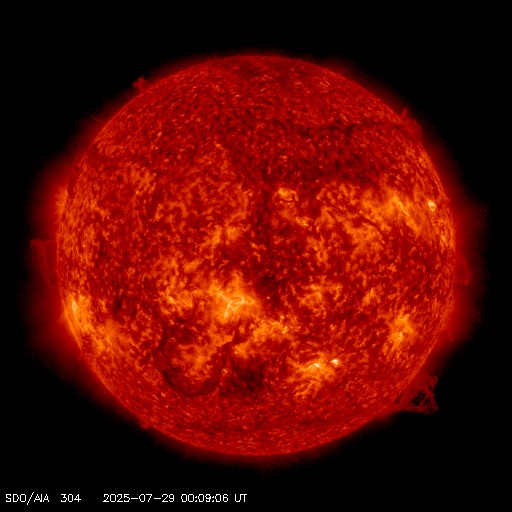
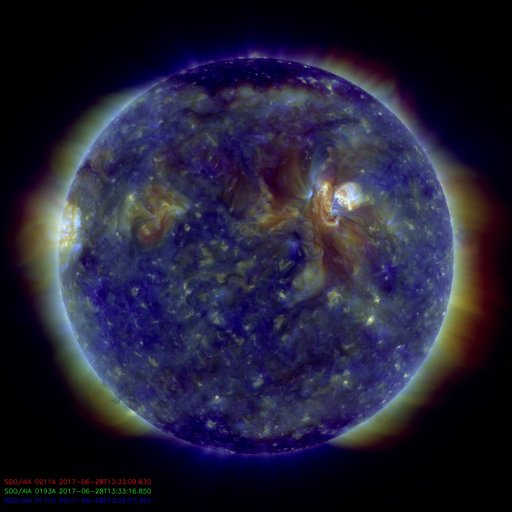
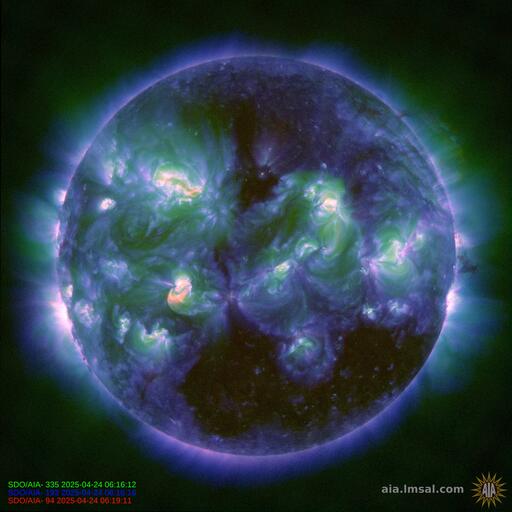
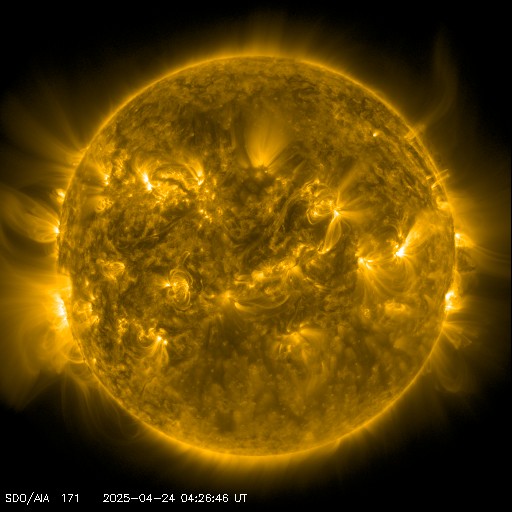
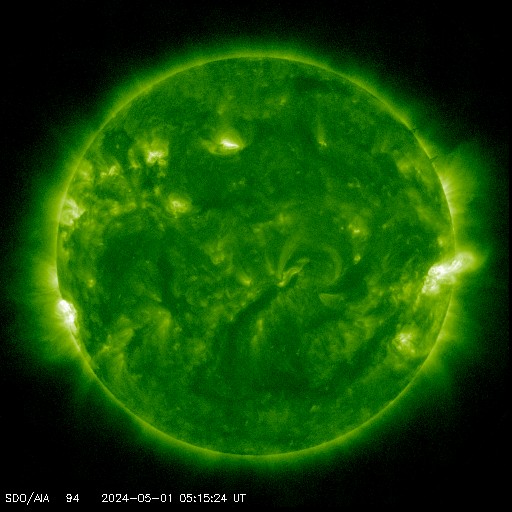
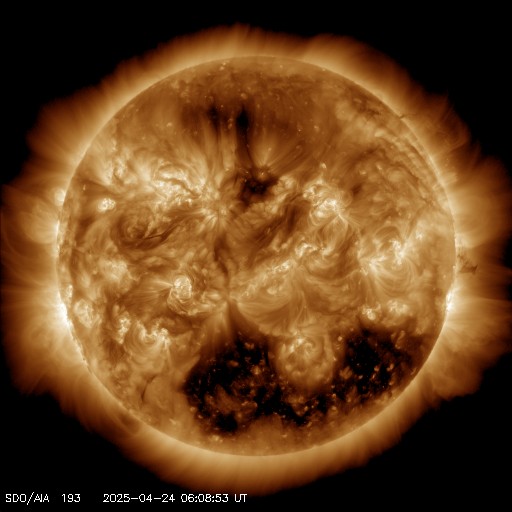


so yah.
ReplyDeletethere's a clear correlation between cosmic particle flux and solar flare activity.
it looks as if the data lags x-ray data for incoming predictions, but the subsequent rise in cosmic particles after a completed event (or series of) can be a good indication of whether activity will continue.
wish i knew WHY this was true....
-learner
Um...
ReplyDeleteCould it be the difference between lightspeed and particle speed? x-rays etc. get here in 8 mins, CMEs take days (even at 800 km/sec!)
And, (I suspect) the CME from one flare can easily arrive as a series of pulses, they're pretty messy--and they're BIG buggers, too, don't forget, with lots of arms, all that.
I noticed that 'glancer' a while back left a more jittery (if less-powerful) trace, so I assume the edges get pretty ragged after coming all that way.
Dunno, frankly, if there's any hard and fast Rule about predicting activity, except maybe the Intuition of Experience---anybody?
G.
nike cortez
ReplyDeletesalvatore ferragamo belt
kevin durant shoes
goyard handbags
yeezy sneakers
coach bags
balenciaga
goyard bags
chrome hearts online store
hermes birkin bag
jordan shoes
xiaofang20191202